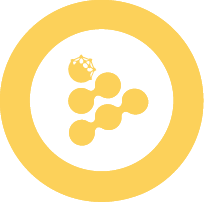🛡️ SGX vs TDX: Technology Comparison
Intel SGX and Intel TDX are both TEE technologies, but they solve the security problem differently. On the iExec platform, SGX is the production-ready, widely-supported technology, while TDX is the experimental, next-generation technology for advanced use cases.
Quick Overview
| Aspect | Intel SGX | Intel TDX |
|---|---|---|
| Release Year | 2015 | 2023 |
| Protection Scope | Application level | Trusted domain level |
| Memory Size | Limited | Extensive (multi-GB+) |
| Code Changes | ❌ Significant changes required | ✅ Minimal changes needed |
| iExec Status | ✅ Production ready | 🔬 Experimental |
| Worker Availability | ✅ Widely supported | ❌ Limited availability |
| iExec Use Cases | Lightweight applications | Complex workloads |
| Platform Support | Full iExec ecosystem | Experimental workerpools |
Key Differences
🎯 Protection Scope
| Aspect | Intel SGX | Intel TDX |
|---|---|---|
| What it protects | Individual applications or parts of applications | Trusted domains (secure virtual machines) |
| Scope | Small, focused secure areas within larger applications | Multiple trusted domains can run on a single TDX machine |
| Analogy | Like installing a small, specialized safe inside your office | Like having multiple secure offices within one secure building |
💾 Memory and Performance
| Aspect | Intel SGX | Intel TDX |
|---|---|---|
| Memory | Limited secure memory (typically 1-2GB) | Large secure memory space (multi-GB+) |
| Performance | Optimized for lightweight applications | Optimized for complex, memory-intensive workloads |
| Limitations/Advantages | Memory constraints can limit application complexity | Can handle large datasets and complex applications |
🔧 Development and Integration
| Aspect | Intel SGX | Intel TDX |
|---|---|---|
| Code Changes | Requires significant modifications to applications | Minimal changes needed - "lift and shift" approach |
| Integration | Higher complexity, more development work | Lower complexity, easier migration |
| Frameworks | Uses Scone framework on iExec for easier development | Works with standard development practices |
| Learning Curve | Steeper learning curve for developers | Familiar development experience |
When to Use Each Technology
Use SGX When:
- ✅ Building production applications
- ✅ Need proven, stable technology
- ✅ Working with lightweight applications
- ✅ Require maximum worker availability
- ✅ Need focused security for specific application parts
Use TDX When:
- 🔬 Experimenting with next-generation technology
- 💾 Working with memory-intensive applications
- 🔄 Running existing applications with minimal changes
- 🚀 Running complex workloads with VM-level protection
What's Next?
Learn about specific TEE technologies:
- Intel SGX Technology - First-generation application-level TEE
- Intel TDX Technology - Next-generation VM-level TEE
Ready to build with TEE? Check out the practical guides:
- Build Intel TDX App (Experimental) - Build TDX applications with traditional deployment and iApp Generator
- Deploy & Run - Create your first TEE application
